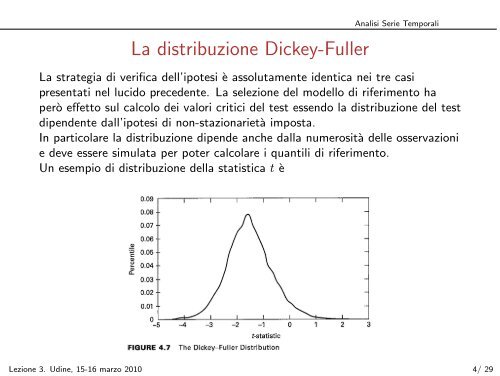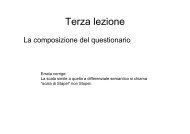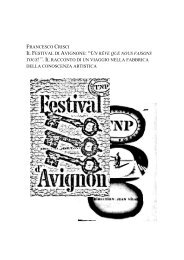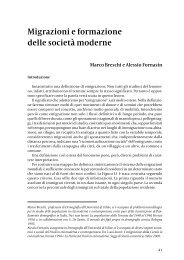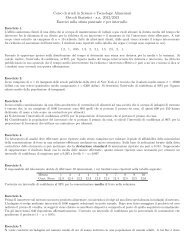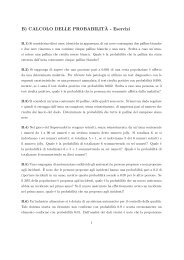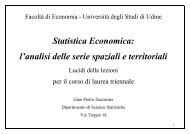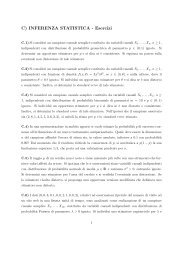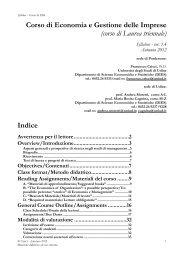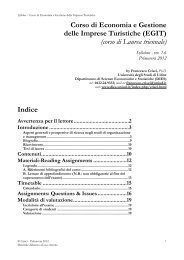Introduzione al corso di Analisi delle Serie Temporali
Introduzione al corso di Analisi delle Serie Temporali
Introduzione al corso di Analisi delle Serie Temporali
Create successful ePaper yourself
Turn your PDF publications into a flip-book with our unique Google optimized e-Paper software.
La <strong>di</strong>stribuzione Dickey-Fuller<br />
An<strong>al</strong>isi <strong>Serie</strong> Tempor<strong>al</strong>i<br />
La strategia <strong>di</strong> verifica dell’ipotesi è assolutamente identica nei tre casi<br />
presentati nel lucido precedente. La selezione del modello <strong>di</strong> riferimento ha<br />
però effetto sul c<strong>al</strong>colo dei v<strong>al</strong>ori critici del test essendo la <strong>di</strong>stribuzione del test<br />
<strong>di</strong>pendente d<strong>al</strong>l’ipotesi <strong>di</strong> non-stazionarietà imposta.<br />
In particolare la <strong>di</strong>stribuzione <strong>di</strong>pende anche d<strong>al</strong>la numerosità <strong>delle</strong> osservazioni<br />
e deve essere simulata per poter c<strong>al</strong>colare i quantili <strong>di</strong> riferimento.<br />
Un esempio <strong>di</strong> <strong>di</strong>stribuzione della statistica t è<br />
Lezione 3. U<strong>di</strong>ne, 15-16 marzo 2010 4/ 29


